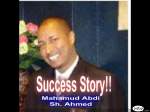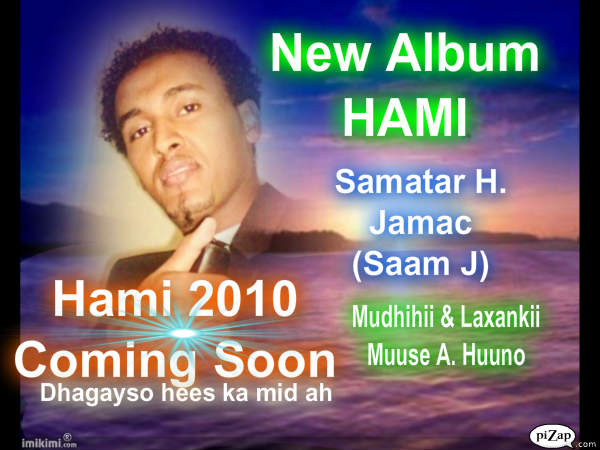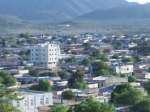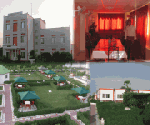Samaroon in the Horn of Africa Always Got the Wrong Reward for Doing the Right Thing By Musa Elmi (Joome)
Posted by Sawnews.tk on April 12, 2010
 First Release
First Release
Introduction
This writing is part of a larger work and is a personal initiative of an author whose sole aim is to provide a brief factual history to the current young generations while at the same time refreshing the minds of others about the sociopolitical roots of their people. The writer has committed himself to do this work after experiencing that many people are already making serious mistakes and distortions even in the latest civil war and pre-civil war positions of the Samaroon people an in many other historical facts. Another compelling factor is that there are people, who of late, are trying to develop new techniques in rewriting history in a way that favors them. Samaroon people are the descendants from Adal and Harar civilizations with rich culture, flourishing literature and one of the longest heritages of Ugases. The irony is that, instead of reviving and exploring their well-rooted golden ages, they, themselves, have started to stumble in accurately recalling the very recent three-decade history. If the trend goes uncorrected and in this way, with the present generations, it will definitely end up in serious identity crisis.
For these reasons, it is essential for anyone, young and old, to understand and refresh their memories on how their people navigated through the historical events that were giving a new shape to the region of Horn of Africa. Some of the significant turning points include the1960’s Northern independence movements, the subsequent unification with Southern Somalia, the cross-country civil wars, the post civil war era and the liberation of Djibouti. A significant part of the writing is devoted why Awdal chose a neutral stand in the countrywide civil war and how they put that into practice. As a convincing proof for potential readers, the writer will relay real life situations in which he physically attended. The principle purpose is to reveal and, at the same time, to justify the people’s stand within the context of what was said or worked out in these situations. The author also believes that now is the right time to turn the pages of history because many of those who participated when those historical events were unfolding are fortunately still alive and are available for attesting. This new book also explores how their land impacted the livelihood of this people. It will further present a critical analysis on how the heroic Samaroon initiatives planted the civic roots in Djibouti and fought for its freedom, how they actively struggled in the Northern Somalia liberation and how, with all their unprecedented efforts, they ended up with the wrong reward. This book concludes an outlook to the future and recommendations for new approach to strategic thinking.
The people and how their land impacts their Life
The people
All those who came in close contact with the Gadabursi, describe them as people who respect other people’s affairs and they expect the same from others. It is unanimously agreed that dignity is of vital importance in their life. They have lordly characteristics, walk upright with privacy and strangers mistakenly think they are unfriendly but approachable and hospitable (Walsh 1932). This author added that they are observant, intelligent and patient and anyone who tries to disengage them must prepare himself for a very serious confrontation, insolence and a tough fight. According to documents from the British Directorate of Military Operations and Intelligence (1917), the Gadabursi is a race that possesses exceptionally high degree of certain positive qualities and can work well with others when their way is accommodated. Richard Burton was one of the first European travelers in the Gadabursi mainland between Zeila and Harar in the longest tiem (1854-5). He spoke Arabic and disguised himself as an Arab and most of what he wrote was based on biased stories of his two guides. He was unwelcome and people distanced him as an infidel white man intruder from another planet. Although he disliked the people, he still reported the pride of the Gadabursi people as, ‘ Their proud bearing and superb carriage bespoke a consciousness of racial superiority and also of physical toughness. They are tall slender people of spare athletic frame… Burton, 1856).
The English colonial administrators who worked in the Somaliland Protectorate reportedly recognized the noble qualities of the Gadabursi. In November 1973, we were three in Baghdad library when an old Englishman approached us and asked if we were Somalis and we answered yes. To our surprise, he spoke fluent Somali and after a little talk invited to us to an afternoon tea in his house. We met him in his house as promised and found it fully decorated with Somali handcrafts and other pictures of people, places and livestock. He was the British Council Baghdad representative at that time but moved from Somalia after the Military coup. The man, as we later, learned was Mr. Tony Fyler, one of the first British civil servants in Somaliland Protectorate and worked in the country for about 35 years. In the middle of our talk, he asked us about our clans and that was when he surprised my friends by pointing his finger at me saying, “ Oh. This man is from the real people.” He then turned to the other two and said don’t get offended, we are only having a frank chat but we outsiders found the people of Borama were uniquely different; they were gentle and confident. He then looked at the Burao man, Ali, and said to him that he could talk or boast as mush as he wanted but would never compete the Borama man in any field. The third friend from Wajaale, Mohamed, sided with Fyler and distanced himself from the Burao culture. He explained how his people share some distinctive qualities with the Borama people. Any way, in that afternoon, Fyler, described how the first British community in that country highly valued appreciated the refined culture of the Borama people. My friend, Ali was studying under the blessings of his uncle, the Director General Ministry of Health at that time. He was enjoying a very generous and well paid WHO scholarship but had a very a bad day in that afternoon. In the later days, during our little occasional evening jokes, Ali apparently had been left with little to be boastful with.
The Land
As reported by (Hunt 1951) in A General Survey of the Somaliland Protectorate, Samaroon, if not the most populous, is among the major populations in the Horn of Africa (1951). Their land is a vast world in between extremities of separating geographical barriers and within different political borders in different countries and that had a serious impact on their life. These lands happened to be within the borders of three different countries of Somalia, Ethiopia and Djibouti. Geographically, they are divided in coastal areas, the Ogo Highlands, the Guban and the mountainous lands.
The Guban means ‘burnt’ in Somali is a sun-baked harsh land and is a mixture of mountains and coastal lands. Coastal lands are thousands of miles with meters-deep white sand that shimmers with heat throughout the year and stretches from Eil-sheikh, near Bulahar in Somalia up to Djibouti. Ascending upwards from the sea, they are in the long strip of Golis mountainous habitat from Ali-Haydh, through Borama/ Gabiley region to Libahley and beyond. Those in the mountains live in a landscape composition of plateaus, deep ravines, low valleys and bushy isolated peaks. Life in both coastal and mountainous lands had always been a real challenge for them and that is where more than half of this people’s populations are. They further move into North Eastern semi-mountainous Ethiopian regions of Shabelle, Harawa and Gogti extending into the Eastern Ethipian Ogo Highlands. These territories in Ethiopia are part of a disputed land between Ethiopia and Somalia for a long time and neither government has invested anything in building schools, hospitals, roads and even proper public administration. In addition, the coastal and mountainous lands in Somalia are equally neglected. The Ogo Highlands are mainly flat lands that provide good grazing in rainy seasons. People had established permanent settlements in the form of towns and they practice subsistence farming. In general, except in Borama surroundings and some of those in Djibouti, the majority of the Samaroon territories had neither received any social services nor infrastructure development from any government.
Musa, E. is a retired university professor and a former diplomat
Follow up with the next part on next Sunday, April 18
References:
Adam, F., The Handbook of Somaliland, London 1900
Burton, R. F., First Footsteps in East Africa, London, 1856.
Hunt, J. A., A General Survey of the Somaliland Protectorate, London, 1951.
Somaliland 1897-1919, War Office No.106: Directorate of Military Operations and Intelligence.
Swayne, Major H.G.C., Seven Trips Through Somaliland and a Visit to Abyssiniya, London, 1903
Walsh, L.P., Under the Flag and Somali Coast Stories, London 1932











Leave a comment